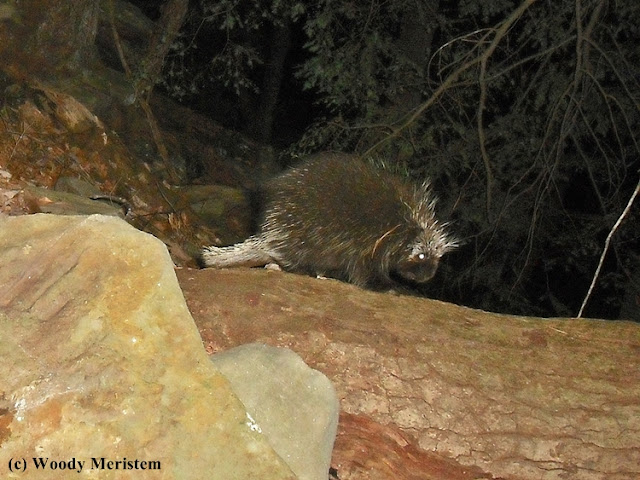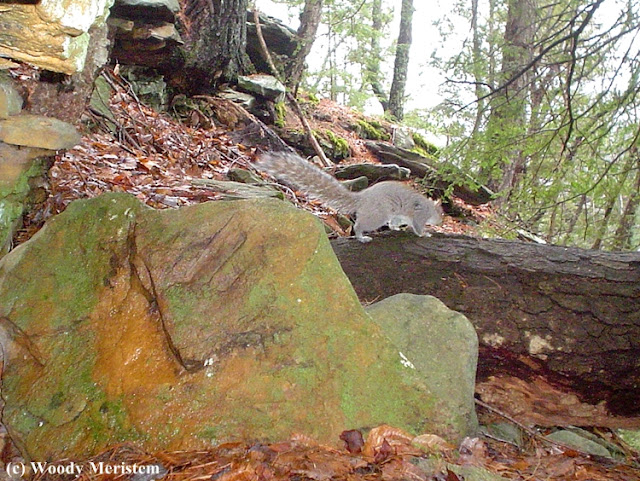For most of a year I’ve had a camera trap
beneath an overhanging rock ledge. Some of the first photos were posted here.
Several checks of the camera trap since that post yielded
more photos: an eastern chipmunk –
A porcupine that apparently dens in the
labyrinth of overhangs, fallen slabs and crevasses of a nearby rock outcropping
and from time to time appeared on camera –
As before, white-footed mice were
frequently in the photographs, often climbing on the ledge –
When it rains, water drips from the
overhang creating a wet spot on the upright slab. It was there that a
white-footed mouse assumed a spread-eagle posture to drink from the wet spot –
Gray squirrels were common visitors –
There were several
photos taken of a house cat far from “home” –
The house cat was fortunate to get that far
from civilization without becoming a meal for a coyote or great horned owl. But
it would be better for native wildlife, especially birds and small mammals, if
the house cat had provided a meal for a predator.
The camera trap
captured its second photo of a gray fox –
On September 1, for the first time, the
camera caught a black bear beneath the ledge –
The bear became a regular visitor, appearing
on camera again on September 29, October 12 and October 21 –
A bobcat lingered long enough for the camera to get a few photographs -
The most fascinating photos were the large number of photos (20+) of a camel cricket taken on several different days. The camera’s passive infra-red (PIR) sensor reacts to changes in temperature to turn on the camera and trigger photographs. How sensitive the PIR must be to react to an invertebrate whose body temperature is close to, or the same as, that of its surroundings, but the PIR did –
The most fascinating photos were the large number of photos (20+) of a camel cricket taken on several different days. The camera’s passive infra-red (PIR) sensor reacts to changes in temperature to turn on the camera and trigger photographs. How sensitive the PIR must be to react to an invertebrate whose body temperature is close to, or the same as, that of its surroundings, but the PIR did –
Although the camera trap doesn’t get a lot
of photos, the variety of wildlife at this spot warrants keeping it in place.




























